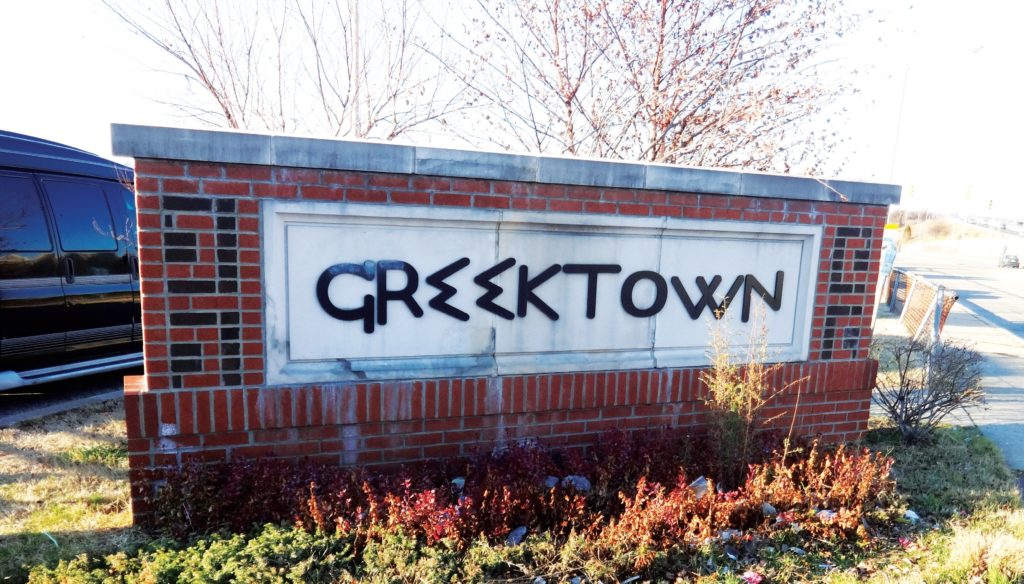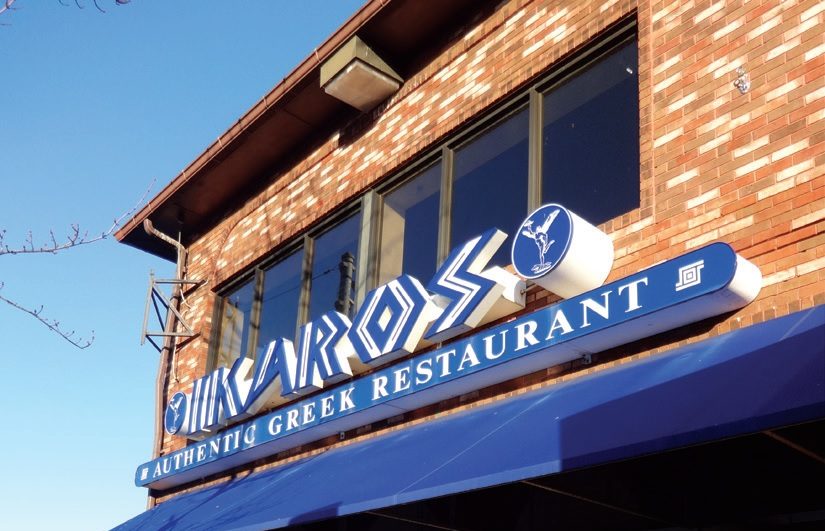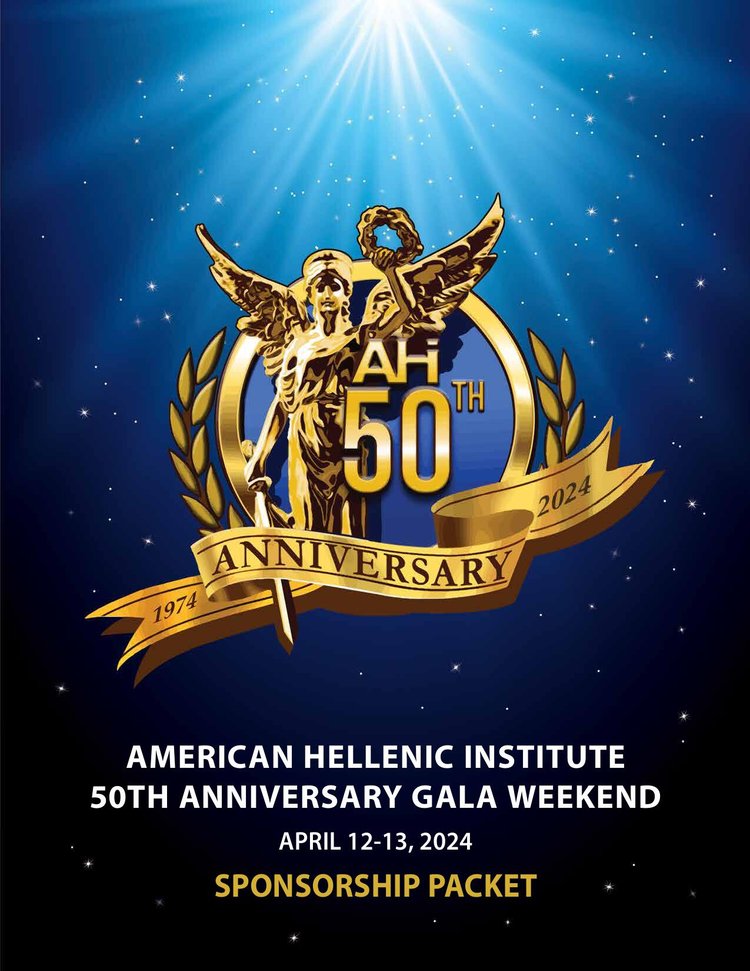Charm City’s Greek Accents
Posted by estiator at 11 September, at 14 : 19 PM Print
Baltimore’s Greektown faces the future. By Michael Kaminer
This is the new face of Baltimore’s Greektown: Oldham Crossing, a luxury townhouse development, opened last year on the site of a vacant warehouse in the neighborhood’s heart. Greektown “has been rediscovered of late for its proximity to major commuter thoroughfares and to the Johns Hopkins Bayview Medical Center campus,” one news story reported.
This is the classic face of Greektown: Xenos Kohilas, 70, has run the hugely popular Ikaros restaurant for nearly five decades. His older brother, Theodosios, founded it as a pastry shop in 1969 after emigrating from Ikaria. Ikaros still draws crowds from across Baltimore; lines can form on weekends. “Even some Greeks who no longer live in the neighborhood come in for some Greek flair,” he says.
Greektown’s future is where Kohilas and the newcomers meet. Greektown’s “Big Three” restaurants, as they are known, are standing their ground as the neighborhood morphs from a working-class immigrant enclave to a gentrifying residential quarter. Ikaros, Samos, and Zorba’s all have their fans and loyalists; their neighbors now include eateries with names like El Merengue, Charro Negro, and Pupuseria Mama Tana.
“Greektown has been ever-changing,” Kohilas says. “You can attribute that to its proximity to the port of Baltimore. Somehow, ethnicities mingled with each other. People gave space and place to the next ethnicity, and so on. It happens every generation.” These days, South Americans number strongest, Kohilas says. “But Greeks are still here, still strong, still maintaining our identity,” he adds.
Some history: The east-side neighborhood that now includes Greektown was known as The Hill for decades, according to Rafael Alvarez, Greektown’s unofficial historian and an author who has written extensively on the area. “It’s an extension of a neighborhood called Highlandtown, which has been welcoming immigrants going back to the turn of the century,” he tells Estiator. “Greektown was called The Hill when my family moved to Greektown in 1935. I still live in the house my grandfather bought.”
The first waves of immigrants were German, Polish, and Italian; while there had been a Greek presence, Greeks “saturated” the neighborhood after World War II, when the Greek Civil War led to mass starvation across Greece. “That’s when the numbers really jumped up,” Alvarez says.
Postwar Greek immigrants built a small neighborhood church in The Hill known as St. Nicholas—officially the St. Nicholas Greek Orthodox Church of Baltimore. “It’s on Ponca street across from Ikaros, one of Baltimore’s most famous Greek restaurants,” Alvarez says. “My grandfather was one of Ikaros’ first customers.”
In the 1980s, the neighborhood’s residents petitioned the Baltimore City Council to change the name of the neighborhood to Greektown, according to the HellenicaWorld site. “The community is organized around the church and a bilingual Greek school established a few years back,” says Kohilas, the Ikaros owner. He estimates that “500 or 600” Greek families populated the area at one time, though suburban flight has pared that number down. Kohilas’ history in the neighborhood is a microcosm of the Greek experience in Baltimore. After joining his brother to run Ikaros, the two expanded the restaurant “over several years, with a lot of patience and persistence.” Eventually, Ikaros “got recognized and accepted,” Kohilas remembers.
“At some point, Greek people saw we had great food and started bringing their friends, and those friends brought their friends. Then we got in the newspaper, which at the time could make you or break you.” The reviews were glowing. “Ikaros was highlighted, and the rest is history,” he says. “We started needing more rooms to accommodate the business. We went from three rooms to four.”
About ten years ago, Kohilas moved Ikaros to a spacious new location, not far from the original. Through all the changes, Kohilas says he has remained steadfast in his dedication to philoxenia—and to what comes out of his kitchen. “Greek cuisine is not what you see on the street, with souvlaki. That’s Greek fast food. In Greece, restaurants don’t serve souvlaki or gyros. Nowhere,” he says. “To cook Greek , you have to follow certain guidelines that you cannot bypass. The food has to be thoroughly, extremely new and fresh. You have to serve it within 24 hours. If you attempt to open a Greek restaurant and you do not comply with that, you will not last more than 48 hours. You have to use prime quality ingredients. That’s very expensive. Fresh seafood. Octopus, calamari, fresh fish. Snapper, rockfish, bronzini.”

And running a restaurant has become more challenging than ever, Kohilas says. “It’s not in competition with other Greek restaurants. I’m in competition with any other eatery. The supermarket is competition. Buying a snack at a gas station is competition.”
With that competition, what kind of Greek DNA will Baltimore’s Greektown be able to maintain in a fast-changing city? The area’s Greek soul will last, says Jason Filippou, a real estate agent who is former director of the Greektown Community Development Corporation. “Baltimore’s Greektown, like many other ethnic neighborhoods across America, has seen significant change in demographics over the past half century. Although different from decades ago, Greektown is still rife with Greek culture due to its thriving Greek Orthodox church centered in the neighborhood, successful Greek businesses, and Greek American residents,” he says. “Baltimore’s Greektown, in my opinion, is unique in its ability to authentically maintain a Greek identity while welcoming new cultures and development.”
Liam Davis, a legislative affairs manager for the Baltimore City Department of Transportation and a politically active Greektown resident, agrees. “Greektown is currently one of the fastest-growing neighborhoods in Baltimore City. Greek culture continues to play an important role in the culture of our diverse community— particularly when it comes to food,” says Davis, former president of the Greater Greektown Neighborhood Alliance, a civic group. “We have an annual Greek Independence Day Parade and fireworks when the clock strikes midnight every Greek Easter. Ultimately, this is an American neighborhood in an American City. We’re proud of our immigrant past and our immigrant present. Greektown is home.”
But Mike Unger, a contributing editor at Baltimore magazine who profiled the neighborhood in a widely read 2020 story, is less sanguine. “It’s now more of a name for a neighborhood than an ethnic town,” he tells Estiator. “There were really just four big Greek restaurants left, and one of them, Acropolis, closed on Christmas Eve in 2019.”
With Baltimore’s changing demographics, “it would be hard to see how there would be a revival of the place purely as an enclave of Greek ancestry of Greek Americans,” Unger says. “It’s a great neighborhood, don’t get me wrong. And I still go there for Greek food. But the idea that you’ll just hear people speaking Greek on the street, or run into someone who came from Greece or has relatives who came from Greece, is no longer realistic.”
Ironically, that’s exactly why Xenos Kohilas, Ikaros’ owner, has faith in the future. “In the area known as Greektown, we’ve seen hundreds, if not thousands, of new apartments over the past ten years, and new businesses as well,” he says. “When these changes started happening, that’s when I started upgrading. The number of new people in the neighborhood makes me optimistic. We’re expecting these people to be our future customers.”


















